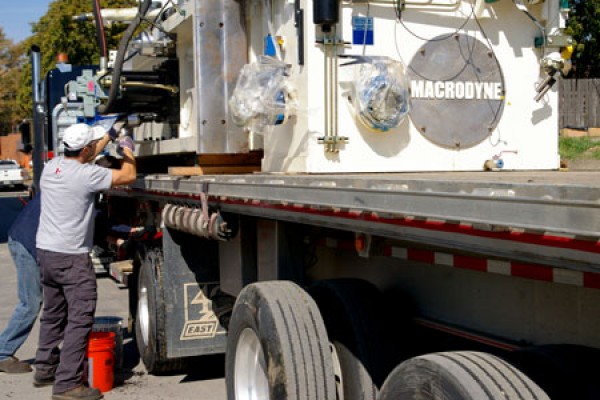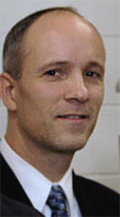
Embracing technology that relies on high-pressure water injection to make auto parts while other institutions are abandoning their research on it will place the university’s engineering department in the good graces of car companies that need to make components from difficult to form lightweight materials, according to Daniel Green.

Daniel Green. |
A key component to solidifying that relationship arrived this week, when Dr. Green took delivery of a 750-ton Macrodyne hydroforming press, which was installed Wednesday in the new Ed Lumley Centre for Engineering Innovation. The press – which stands about 19 feet tall and weighs 75,000 pounds – will inject water into steel and aluminum tubes and allow Green to conduct research that will assist manufacturers in forming such automotive parts as engine cradles, side rails, roof rails, radiator support frames and B-pillars.
“It will be wonderful to have,” said Green, a Canada Research Chair in Development and Optimization of Metal Forming Processes. ““Hydroforming is one of the manufacturing processes around which my CRC program was developed. This press will give us new experimental capability to hydroform tubular specimens under semi-industrial conditions. It will more than meet our needs in regards to experimental hydroforming.”
Green said hydroforming enjoyed a great deal of attention about 10 or 15 years ago, but fell out of favour with the research community as it became a mature manufacturing technology. However, in recent years, with increased pressure to reduce vehicle weight, companies like Ford are looking to hydroforming lightweight alloys and ultra-high-strength steels and will rely on university partners to research the best ways of incorporating those materials into their vehicles, Green said.
Andy Jenner, an engineering department technician who has helped coordinate the move of equipment from Essex Hall to the CEI, said the size and weight of the press clearly made it the most challenging piece of equipment to get in to the new building.
After the press was delivered it was disassembled and sections of doors still had to be removed to get it in to the building. Workers from Lalonde Machinery Movers of Toronto had to chain two 50,000 pound capacity forklifts together, back to back, in order to counter balance the weight of the press as it was lowered into the space it occupies. Workers also had to install 15 steel jack posts in the basement below to support the floor it sits on, Jenner said.
Jenner said it still may take a while before the press is operational. A control cabinet still needs to be installed, and the press needs to be commissioned by the company to ensure that it meets all safety specifications before it can be used.
Once operational, users will be able to install metal tubing into various hydroforming dies. These tubes are then sealed at both ends and injected with water up to a pressure of about 30,000 pounds per square inch so that they take the shape of the die.
“There are a lot of advantages to hydroforming automotive parts because tubular structures typically achieve superior strength and stiffness while offering great potential for weight reduction,” Green said.

